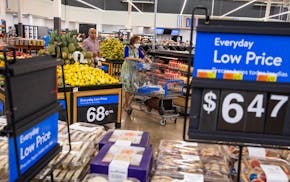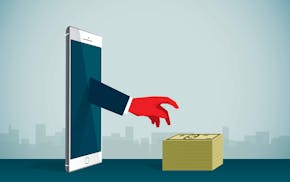At Creative Lighting in St. Paul, company president and co-owner Michael Minsberg has not heard a thing about tariff relief, despite President Donald Trump's announcement of a Phase One trade deal with China. Minsberg's Chinese imports, and those of many other Minnesota businesses, remain saddled with protectionist tariffs that raise costs and cut profits.
"If relief is on the horizon, it has not gotten to us," Minsberg told the Star Tribune last week.
If he was going to benefit from what the White House promoted as a breakthrough in Trump's trade war with China, Minsberg thinks some of his vendors would have announced price drops by now.
"Tariffs," he said, "are actually a status quo situation that everyone has gotten used to."
The president's reliance on punitive tariffs seems as strong as ever. In a recent speech at the World Economic Forum in Davos, Switzerland, Trump said that his economic "achievements [with China] would not have been possible without the implementation of tariffs, which we had to use, and we're using them on others too. And that is why most of our tariffs on China will remain in place during the Phase Two negotiations. For the most part, the tariffs have been left, and we're being paid billions and billions of dollars a year as a country."
The problem, according to trade specialists, is that American businesses pay most of those billions in tariffs, not the Chinese. If Trump makes good on threats he made at Davos to tax the products of the European Union, including a tariff on E.U.-made cars, the financial picture for U.S. companies could become more uncertain.
The president said E.U. preferential policies cost the U.S. $150 billion per year.
"They have trade barriers where you can't trade," Trump said in Davos. "They have tariffs all over the place. They make it impossible. They are, frankly, more difficult to do business with than China."
The president promised that new trade negotiations between the U.S. and the E.U. will change that disparity. Trump also attacked digital taxes on the revenue of U.S. companies applied by France and England that are discriminatory, said Robert Kudrle, a professor of international trade at the University of Minnesota.
Nevertheless, "a trade war with China and the European Union at the same time would be pretty devastating to U.S. exporters," said Tim Kehoe, an economist specializing in trade theory at the U.
Exporters facing retaliatory tariffs from the E.U. could lose the way U.S. soybean farmers lost when China slapped retaliatory tariffs on their exports and effectively shut down the Chinese market. Minnesota exports more than $8 billion in products and services to the E.U. each year, including $1.4 billion worth of medical and electrical equipment, E.U. records show.
"Here in Minnesota, we depend on the export of high-tech products to the E.U.," Kehoe said. "A trade war could threaten our [exports of] medical technology and business control equipment."
China pledged to buy $200 billion in American products as part of the Phase One trade agreement with the U.S., including $40-$50 billion in agricultural products. The Chinese also expressed some willingness to change practices that kept U.S. companies from operating in China unless they partnered with Chinese firms and gave up business secrets. But Kudrle said many economists still do not consider the global trade war to be over.
Punitive tariffs remain on $370 billion in Chinese imports. Adding tariffs to European imports will only make the situation more uncertain, Kudrle said.
Scott MacDonald, a manufacturer's representative from Minnetonka, does business with a variety of retailers. He sees some of the companies he sells to struggling because of the tariffs.
Anecdotally, MacDonald said that some "big-time tariff targets," such as toys and televisions, didn't sell well during Christmas at stores he frequents. Still, like Creative Lighting's Minsberg, MacDonald believes protective and retaliatory tariffs are here to stay.
"I don't see us ever going back to pre-tariff days, and 25% is a huge whack," he said of the top protective tariff rate on Chinese imports.
Adding to the uncertainty, targets for sales to China are set so that no one will be able to tell if they worked until after the 2020 presidential election, Kudrle and Kehoe said. More to the point, the two economists agree that the sales targets are ambitious given the state of China's current economy. The targets also do not come with policies to ensure they are met.
Even farmers promised increased sales by the China Phase One deal lack certainty.
As he prepared his soybean crop for harvest on his Blue Earth County farm, Kevin Paap, president of the Minnesota Farm Bureau, was still in a wait-and-see mode about new shipments.
"China doesn't usually buy from us this time of year," Paap said.
The China deal was a "promise to buy more beans, not take off tariffs," he added. "China can waive the tariffs. But China is a very tough negotiator. Sometimes we have orders, and they're canceled. That's why we want to see beans on boats."
Minnesota's med spa industry rises in popularity — and with little regulation

Ramstad: Readers say Walmart won't be paying the ultimate price of Trump's tariffs

How Minnesota businesses can spot and prevent invoice fraud
No place for cryptocurrency in retirement portfolios

